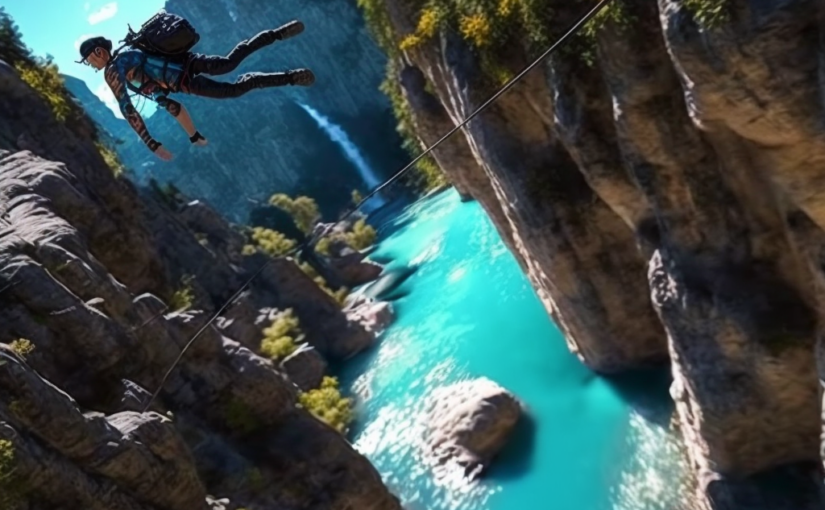Asia is a continent filled with a variety of cultures, landscapes, and adventures. But with all the amazing opportunities for exploration and discovery comes a few risks. In this article, we’ll explore some of the most dangerous trips in Asia, from trekking in the Himalayas to canyoning in India. We’ll also discuss safety tips and precautions to consider when embarking on these dangerous journeys.
Overview of Asia
Asia is the world’s largest and most populous continent, located primarily in the eastern and northern hemispheres. It covers 8.7% of the Earth’s total land area and comprises 30% of its land area. It is home to the world’s largest population, with over 4.5 billion people, or 60% of the world’s population. It is also the most linguistically and culturally diverse continent, with over 4,000 languages spoken by its inhabitants.
Asia is divided into 48 countries, with the most populous being China, India, Indonesia, Pakistan, Bangladesh, Russia, Japan, and the Philippines. Its landmass is divided into two main regions: East Asia and South Asia. East Asia includes China, Japan, North Korea, South Korea, Mongolia, and Taiwan. South Asia includes India, Pakistan, Bangladesh, Nepal, Bhutan, Afghanistan, and Sri Lanka. You can learn more about traveling on other continents, for example, in Africa, in the article on our website.
Examples of Dangerous Trips
Traveling to Asia can be both an exciting and dangerous experience. From trekking in Nepal to canyoning in India, there are a number of dangerous trips to be found in the region. We will discuss some of the most dangerous trips in Asia, including trekking in Nepal, hiking in the Himalayas, climbing Mount Everest, and canyoning in India.
- Trekking in Nepal: Nepal is a beautiful country filled with mountain peaks, but it also has many dangers that come with trekking in the wilderness. Avalanches, landslides, and unpredictable weather can all pose risks to travelers.
- Hiking in the Himalayas: The Himalayas is one of the most stunning mountain ranges in the world, but it is also a dangerous place to explore. Altitude sickness, extreme weather, and unpredictable terrain can all be risks to those who hike in this region.
- Climbing Mount Everest: Mount Everest is the highest peak in the world, and it is an extremely dangerous and difficult climb. The height of Mount Everest is 8,848 meters (29,029 feet). The thin air, extreme temperatures, and treacherous terrain all make it one of the most dangerous trips in Asia.
- Canyoning in India: Canyoning in India can be a thrilling experience, but it is also a risky one. Flash floods, slippery rocks, and dangerous wildlife can all be risks for those who attempt this activity. See this site to find out how you can experience this dangerous adventure in exotic India.
Safety Tips
Traveling to Asia can be an exciting and rewarding experience, but it is important to remember that it can also be a dangerous place. In order to stay safe, it is essential to take the necessary precautions. Here are some tips to help you stay safe while traveling in Asia.
- Stay Informed: It is important to stay up to date on the latest news and safety updates in the areas you are traveling to. Be sure to read up on the latest travel advisories, health warnings, and security updates. This will help you be better prepared and aware of any potential dangers.
- Bring the Right Gear: Be sure to pack the right gear for your travels. Bring items such as a first-aid kit, a flashlight, a map, and any other items that might be useful in an emergency. Additionally, it is a good idea to carry a cell phone with international calling capabilities.
- Know Your Limits: It is important to know your limits and to be aware of your surroundings. Be sure to stay in well-lit, populated areas, and avoid traveling alone. Also, be sure to trust your instincts and avoid any potentially dangerous situations.
Adventuring in Asia can be a thrilling experience, but caution and preparation are key. With its vast and varied terrain, Asia offers a range of thrilling and dangerous experiences for the brave traveler. From trekking in the Himalayas to exploring the jungles of Borneo, there are plenty of opportunities for adventure. However, it is important to remember that some of these trips can be dangerous, so it is essential to do your research and be prepared. Make sure you know the risks associated with the activity you are undertaking and always be aware of your surroundings. With the right precautions, you can have a safe and exciting adventure in Asia.
Asia is divided into 48 countries, with the most populous being China, India, Indonesia, Pakistan, Bangladesh, Russia, Japan, and the Philippines.
The height of Mount Everest is 8,848 meters (29,029 feet).
Bring items such as a first-aid kit, a flashlight, a map, and any other items that might be useful in an emergency. Additionally, it is a good idea to carry a cell phone with international calling capabilities.










